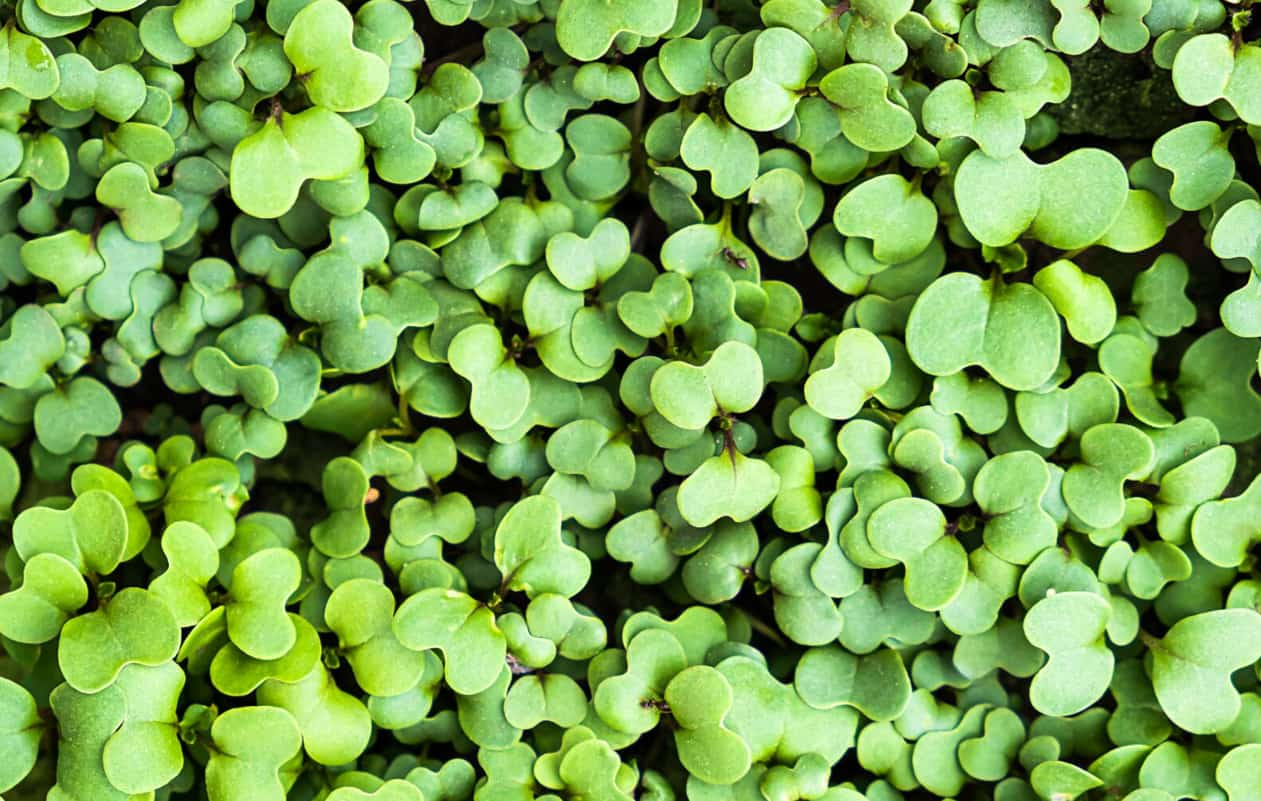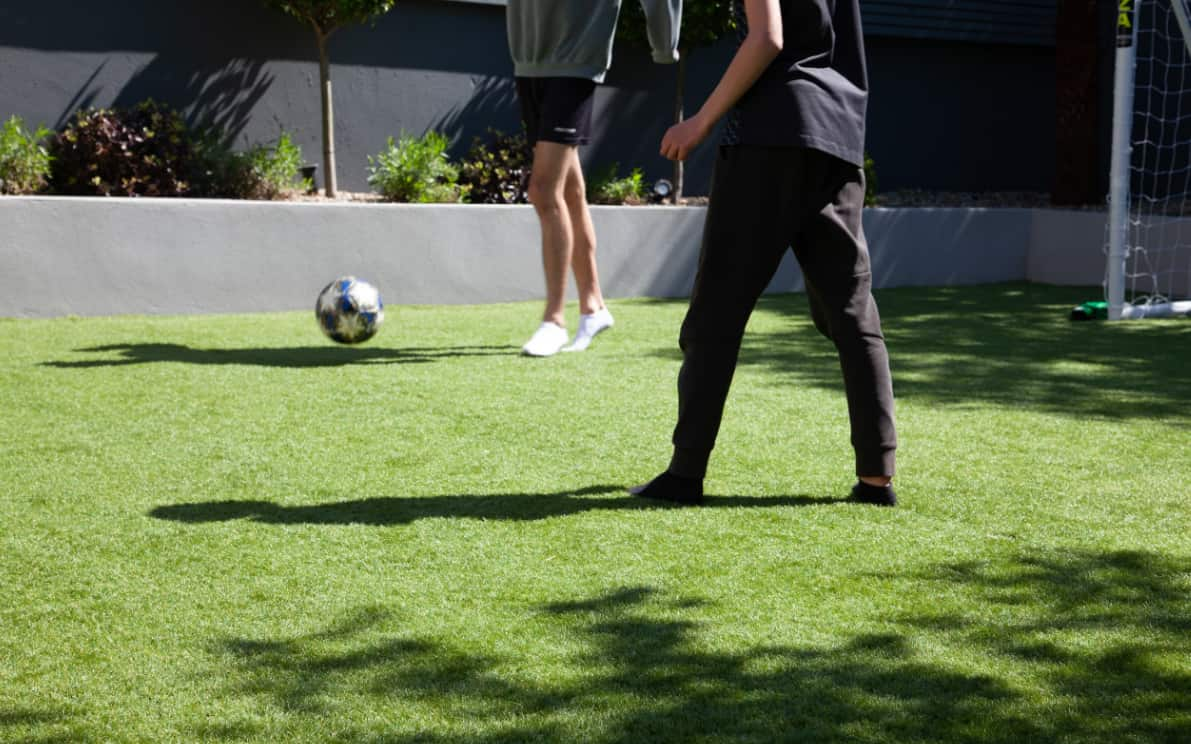Have you ever thought about adding clover to your lawn? Not just any clover, but a special kind called microclover. It might sound strange, but more and more people are doing it.
Let’s talk about why microclover is becoming so popular and how it can make your lawn look great.
Microclover is a tiny type of clover that can mix with your grass.
It’s not like the big clovers you might see in fields. This small plant can help your lawn in many ways.
It can make your grass greener, healthier, and easier to take care of.
In the past, people often saw clover as a weed. They tried to get rid of it. But now, gardeners and lawn experts are starting to see how useful clover can be.
Microclover is especially good because it’s small and neat. It won’t take over your whole lawn like some other plants might.
Adding microclover to your lawn can save you time and money. You won’t need to use as much water or fertilizer.
Your lawn will be stronger and able to fight off weeds and pests better. Plus, it’s good for the environment. Bees and other helpful insects like it.
What is Microclover and Why is it Good for My Lawn?

In this article, we’ll look at everything you need to know about microclover.
We’ll talk about what it is, why it’s good for your lawn, and how to grow it.
We’ll also look at some of the downsides, so you can decide if it’s right for you.
By the end, you’ll be an expert on this little plant that can make a big difference in your yard.
What is Microclover?
Microclover is a special type of clover. It’s much smaller than the clover you might usually see. Here are some key things to know about microclover:
- It’s a dwarf version of white Dutch clover
- The scientific name is Trifolium repens
- It grows very low to the ground
- The leaves are much smaller than regular clover
- It doesn’t form clumps like other clovers
Microclover has been popular in Europe for a long time. It’s just starting to catch on in the United States. People like it because it can mix well with grass without taking over.
There are different types of microclover. The most common ones in the U.S. are:
- “Pirouette”
- “Pipolina”
These types grow about 4-6 inches tall. You can mow them down to 3 inches if you want. This is much shorter than other types of clover.
How is Microclover Different from Regular Clover?
Here’s a simple table to show how microclover is different from regular white clover:
| Feature | Microclover | Regular White Clover |
|---|---|---|
| Height | 4-6 inches | 4-8 inches |
| Leaf Size | Very small | Larger |
| Growth Pattern | Spreads evenly | Forms clumps |
| Flowers | Few, small | Many, larger |
| Mowing Tolerance | Good | Fair |
As you can see, microclover is smaller in almost every way. This makes it better for mixing with grass in a lawn.
Why is Microclover Good for Your Lawn?
Now that we know what microclover is, let’s talk about why it’s good for your lawn. There are many benefits to adding this little plant to your grass.
1. It Makes Your Lawn Greener
Microclover can make your whole lawn look greener. It does this in two ways:
- It stays green even when grass turns brown in hot weather
- It adds nitrogen to the soil, which helps grass grow better
This means your lawn will look good all year round. You won’t have those ugly brown patches in the summer.
2. It Helps Fight Weeds
Weeds can be a big problem in lawns. Microclover can help:
- It grows thick and low, which stops weeds from growing
- It covers bare spots where weeds might start
With microclover, you might not need to use weed killers as much.
3. It’s Good for the Environment
If you care about the environment, microclover is a great choice:
- It needs less water than grass
- You don’t need to use as much fertilizer
- It helps bees and other pollinators
By using microclover, you’re helping to save water and reduce chemicals in your yard.
4. It’s Low Maintenance
Taking care of a lawn can be a lot of work. Microclover makes it easier:
- You don’t need to mow as often
- It doesn’t need much fertilizer
- It stays green without much watering
This means you can spend less time working on your lawn and more time enjoying it.
5. It Can Grow in Tough Spots
Some areas are hard to grow grass in. Microclover can help:
- It can grow in poor soil
- It does well in shady areas
- It can handle some foot traffic
If you have spots where grass won’t grow, microclover might be the answer.
Benefits of Clover
Before we dive deeper into microclover, let’s look at the benefits of clover in general. All types of clover, including microclover, can help your lawn in many ways:
- Stops Soil Erosion: Clover roots hold soil in place, preventing it from washing away.
- Fights Weeds: It grows thick, stopping weeds from taking root.
- Natural Fertilizer: Clover adds nitrogen to the soil, feeding other plants.
- Creates Green Manure: When it dies, it adds nutrients to the soil.
- Less Lawn Work: You don’t need to mow or water as much.
- Saves Energy: Less mowing means using less fuel.
- Conserves Water: Clover needs less water than grass.
- Saves Money: You spend less on lawn care products.
- Eco-Friendly: It reduces the need for harsh chemicals.
- Improves Soil: You don’t need to aerate or dethatch as often.
- Helps Pollinators: Bees and butterflies love clover.
- Prevents Lawn Diseases: It helps stop fungus and other problems.
- Resists Pests: Bugs like grubs don’t like clover as much as grass.
Clover is tough. It can handle cold weather and even grow in hard, packed soil. It’s a great addition to any lawn.
Special Benefits of Microclover
Now, let’s look at what makes microclover special. It has some benefits that other types of clover don’t:
1. Microclover Grows Well with Turfgrasses
One big advantage of microclover is how well it mixes with grass:
- It doesn’t grow as fast as other clovers
- It won’t take over your lawn
- It works well with many types of grass
You can mix microclover with:
- Tall fescue
- Fine fescue
- Kentucky bluegrass
- Perennial ryegrass
This means you can keep your grass and add microclover too. You get the best of both worlds.
2. Microclover Looks Tidier than Regular Clover
If you like a neat lawn, microclover is a good choice:
- It’s shorter than white clover
- You can mow it easily without hurting it
- The leaves are smaller, especially if you mow often
Here’s how microclover compares to white clover in looks:
| Feature | Microclover | White Clover |
|---|---|---|
| Height | 4-6 inches | 4-8 inches |
| Leaf Size | Very small | Larger |
| Appearance When Mowed | Very neat | Can look messy |
| Flowers | Few, small | Many, larger |
Microclover only flowers for about a month in summer. If you mow regularly, you might not see flowers at all. This gives your lawn a more uniform look.
Disadvantages of Microclover
While microclover has many benefits, it’s not perfect. Here are some downsides to consider:
- Not Great in Drought: It doesn’t handle very dry conditions well.
- Needs Sun: It doesn’t grow well in very shady areas.
- Can Be Expensive: The seeds cost more than regular grass or clover.
- Not Good for Heavy Traffic: It can’t handle lots of people walking on it.
- May Get Southern Blight: This is a disease that can affect microclover in warm, humid places.
- Attracts Bees: While good for the environment, this might not be great if you’re allergic to bee stings.
It’s important to think about these issues before you decide to plant microclover.
How to Grow Microclover in Your Yard?
If you’ve decided to try microclover, here’s how to grow it:
- Prepare the Soil:
- Dig up 4-6 inches of soil
- Add compost to make the soil better
- If needed, add lime to adjust the soil pH (microclover likes a pH of 6 or 7)
- Level the Ground:
- Use a rake to make the surface even
- Plant the Seeds:
- Use a seed spreader to spread the seeds evenly
- You need about 1-2 pounds of seed for every 1,000 square feet
- Water the Seeds:
- Water lightly but often
- Keep the soil moist but not soggy
- Wait for Growth:
- Seeds usually start to grow in 7-14 days
- Add more seeds if you see bare spots
- Care After Growing:
- Once established, water 1-2 times a week
- Mow when it reaches your desired height
Tips for Success:
- Plant in spring or fall for best results
- Aerate your lawn before planting for better growth
- Avoid using weed killers, as they can harm microclover
Remember, microclover is a perennial, but it doesn’t live forever. You might need to plant new seeds every 2-3 years to keep your lawn looking good.
FAQ about Microclover
Here are some common questions people have about microclover:
- 1. How much does microclover cost?
Microclover can be expensive. Here’s a rough guide:
| Amount of Seeds | Yard Size | Cost (per pound) |
|---|---|---|
| ¼ lb. | 250 sq. ft. | $10 to $12.50 |
| ½ lb. | 500 sq. ft. | $20 to $25 |
| 1-2 lbs. | 1,000 sq. ft. | $40 to $50 |
| 5-10 lbs. | 5,000 sq. ft. | $200 to $500 |
| 10-20 lbs. | 10,000 sq. ft. | $400 to $1,000 |
- 2. How much microclover should I mix with grass seed?
If you’re mixing microclover with grass seed, use about 3% to 5% microclover in the mix.
- 3. When is the best time to plant microclover?
The best times to plant are:
- Spring: About 2 weeks before the last frost (usually mid-March to mid-April)
- Fall: About 4-8 weeks before the first frost (around September or October)
Don’t plant when it’s very hot or when the ground is frozen.
- 4. Can I plant microclover in an existing lawn?
Yes, you can add microclover to a lawn you already have. This is called overseeding. It’s best to do this after aerating your lawn.
- 5. How often do I need to water microclover?
Once it’s growing well, microclover only needs watering 1-2 times a week. It needs less water than most types of grass.
- 6. Will microclover take over my lawn?
No, microclover grows more slowly than regular clover. It mixes well with grass without taking over.
- 7. Is microclover good for pets?
Microclover is safe for pets. Some animals, like rabbits, even like to eat it.
- 8. Does microclover stay green all year?
In most climates, microclover stays green longer than grass. But it might turn brown in very hot, dry weather.
- 9. How short can I mow microclover?
You can mow microclover down to about 3 inches. Mowing it often will make the leaves even smaller.
- 10. Does microclover need fertilizer?
Microclover doesn’t need much fertilizer. It adds nitrogen to the soil, which helps feed other plants.
Conclusion: Is Microclover Right for Your Lawn?
Microclover can be a great addition to many lawns. It’s eco-friendly, low-maintenance, and can make your yard look better. Here’s a quick recap of the main points:
Pros of Microclover:
- Makes your lawn greener
- Needs less water and fertilizer
- Helps fight weeds
- Good for the environment
- Low maintenance
Cons of Microclover:
- Can be expensive to start
- Doesn’t do well in very dry or shady areas
- Might attract more bees (good for nature, but not if you’re allergic)
Before you decide to add microclover to your lawn, think about:
- Your climate: Does it get very hot and dry where you live?
- Your yard: Do you have lots of shade?
- Your budget: Can you afford the initial cost?
- Your lawn goals: Do you want a very traditional look, or are you open to something a bit different?
If you decide to try microclover, start small. Plant it in one area of your yard and see how it does. You can always add more later if you like the results.
Remember, a healthy lawn doesn’t have to be all grass. Microclover can be a smart, sustainable choice that’s good for your yard and the planet.
Whether you go all-in with microclover or just add a little to your existing lawn, you’re taking a step towards a greener, easier-to-care-for yard.













